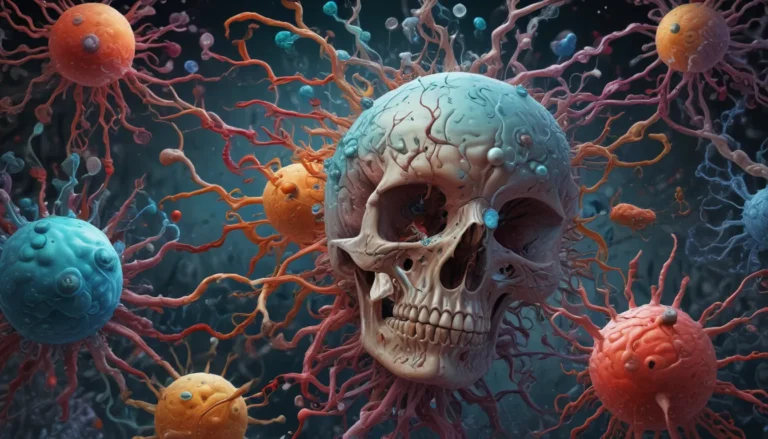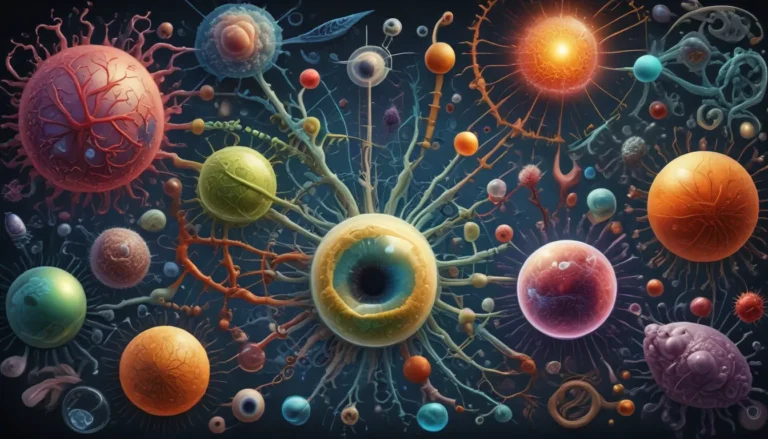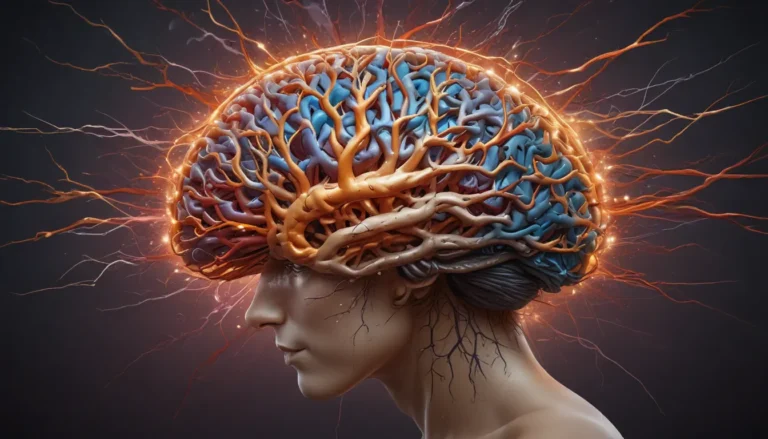A Note About Images: The images used in our articles are for illustration purposes only and may not exactly match the content. They are meant to engage readers, but the text should be relied upon for accurate information.
In the realm of biology, developmental genes stand out as fascinating architects of life, dictating the growth and formation of living organisms. From the intricate processes of embryonic development to the shaping of body structures and organ systems, these genes play a pivotal role in defining the blueprint of life. While many are familiar with the basic principles of genetics, there are surprising facts about developmental genes that often go unnoticed. Let’s embark on a journey to uncover 10 intriguing insights into the realm of developmental genetics, shedding light on the complex mechanisms that underpin biological development.
Exploring the Role of Developmental Genes
Developmental genes hold the key to unraveling the mysteries of growth and development in organisms. They serve as the guiding force behind the formation of body structures, the timing of developmental processes, and the overall organization of the body plan. By orchestrating a symphony of cellular events, these genes lay the foundation for the intricate tapestry of life to unfold.
Unveiling the Conservation Across Species
One of the most remarkable aspects of developmental genes is their high degree of conservation across different species. This conservation signifies that many of the genes involved in development exhibit striking similarities, if not identical sequences, in organisms ranging from fruit flies to humans. Despite the vast diversity in the animal kingdom, the fundamental genetic instructions that govern development remain remarkably preserved.
The Mastery of Embryonic Development
Embryonic development stands as a marvel of precision orchestrated by developmental genes. These genes assume the critical task of regulating the formation of tissues and organs during the embryonic stage. Through their intricate dance of cell differentiation, proliferation, and migration, developmental genes sculpt the nascent embryo into a fully functional organism, laying the groundwork for life to flourish.
Pondering the Impact of Mutations
The delicate balance of developmental genes can be disrupted by mutations, leading to profound consequences. Any alteration in the sequence of these genes can derail normal development, culminating in birth defects and developmental disorders. Understanding the intricacies of these mutations is crucial in paving the way for innovative treatments to address a myriad of health conditions, including age-related diseases.
Delving into Homeobox Genes
Within the realm of developmental genes, homeobox genes, also known as Hox genes, reign supreme in controlling the development of specific body segments and regions. These genes wield the power to dictate the formation of limbs, organs, and other crucial structures during embryonic development, underscoring their indispensable role in sculpting the intricacies of the body plan.
Expanding Horizons: Beyond Physical Traits
While the role of developmental genes in shaping physical traits is well-known, their influence extends far beyond mere anatomy. Surprisingly, these genes play a pivotal role in shaping behavior and cognitive abilities, shedding light on the intricate interplay between genes and complex behaviors. From intelligence to personality traits, developmental genes contribute to a tapestry of characteristics that define individuality.
Navigating the Influence of Environmental Factors
While genes wield significant influence in development, environmental factors can also sway the expression of developmental genes. Factors such as nutrition, exposure to toxins, and stress can exert a profound impact on gene activity, modulating the intricate dance of cellular development. The interplay between genes and the environment unveils a dynamic landscape where external cues shape biological outcomes.
The Lifelong Role of Developmental Genes
The impact of developmental genes transcends embryonic development, extending into tissue regeneration and repair throughout our lives. These genes serve as the guiding light in renewing and replenishing damaged or lost cells in various tissues, underpinning the body’s ability to heal and regenerate. Their enduring presence underscores their indispensability in the perpetual cycle of growth and renewal.
Unraveling the Mysteries of Gene Activation
Although many developmental genes spring into action during embryonic development, some genes can lie dormant, only to be reactivated later in life under specific circumstances. This rekindling of gene activity plays a vital role in processes such as tissue repair, wound healing, and organ regeneration, illuminating the remarkable plasticity of genetic expression.
Paving the Path to Medical Advancements
The study of developmental genes holds profound implications for advancing medical research and treatment paradigms. By unraveling the intricate tapestry of these genes, scientists can chart new avenues for therapeutic interventions targeting birth defects, developmental disorders, and even age-related degenerative diseases. The potential to harness the insights gleaned from developmental genetics represents a transformative frontier in medical science.
Embracing the Complexity of Developmental Genes
Developmental genes remain at the heart of biological development, guiding the intricate dance of growth and differentiation in organisms. Their profound impact transcends traditional boundaries, shaping not just physical traits but also behavior, cognitive abilities, and the trajectory of evolution itself. As we unravel the enigmatic world of developmental genetics, we gain a newfound appreciation for the symphony of life orchestrated by these genetic architects.
Frequently Asked Questions
What are developmental genes?
Developmental genes are a group of genes that regulate the growth, development, and differentiation of cells, tissues, and organs in an organism.
How do developmental genes work?
Developmental genes govern the activation and suppression of specific genes at various developmental stages, dictating the formation of body structures and the specialization of cells.
Are developmental genes the same in all organisms?
Developmental genes exhibit a high degree of conservation across diverse organisms, showcasing similar functions and sequences across species.
What happens if there is a mutation in a developmental gene?
Mutations in developmental genes can give rise to developmental disorders or abnormalities, impacting an organism’s growth and overall development.
Can developmental genes be influenced by environmental factors?
Indeed, environmental cues can modulate the expression of developmental genes, shaping development outcomes through external stimuli.
Do developmental genes play a role in evolution?
Developmental genes play a pivotal role in evolution, driving the emergence of new structures and traits through alterations in gene regulation and expression.
Can developmental genes be manipulated for therapeutic purposes?
Manipulation of developmental genes holds promise for therapeutic interventions, offering new avenues for treating developmental disorders and diseases.
Is it possible for developmental genes to be “turned off” or “turned on”?
Developmental genes are subject to molecular mechanisms that regulate their activation in specific tissues and at specific times, enabling precise control over development.
Are all creatures born with the same set of developmental genes?
All organisms possess a core set of developmental genes crucial for early embryonic development, with variations in gene activation and interactions leading to a diverse array of life forms.
In conclusion, the realm of developmental genes unveils a captivating saga of genetic orchestration, shaping the intricate tapestry of life itself. As we delve deeper into the mysteries of developmental genetics, we unravel the secrets of growth, development, and regeneration that underscore the profound complexity of biological systems. By embracing the enigmatic world of developmental genes, we embark on a transformative journey towards understanding the genetic architects that underpin the symphony of life.






